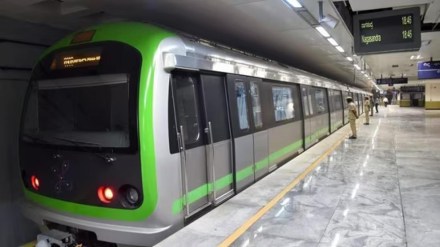In a significant boost to Bengaluru’s public transit network, Chief Minister DK Shivakumar announced on Wednesday that 175 km of new metro lines will be operational in the city by 2026. At a press conference following his inspection of the newly extended Nagasandra-Madavara line on Tumkur Road, Shivakumar shared that 30 km of new lines are expected to be added by 2025, with the ambitious target of 175 km set for the following year.
The Deputy Chief Minister rode the metro with MP Tejaswi Surya, Nelamangala MLA Srinivasaiah, and Dasarahalli MLA Muniraju, travelling from Yeshwanthpur to Madavara metro station. Highlighting the progress of the metro project, he noted that the first and second phases are now complete, while the third phase has received approval from the Central Government. “We have allocated Rs 1,130 crore for new train sets,” Shivakumar stated.
Nagasandra to Madavara Metro
The metro extension from Nagasandra to Madavara, covering a 3-km stretch, will begin operations on an experimental basis tomorrow. A formal inauguration with MPs and other representatives is planned for a later date.
Additional infrastructure is being developed to support this expansion, including a pedestrian skywalk at Manjunathanagar metro station and a collaborative project with Indian Railways to build a pedestrian passage at Yeshwanthpur railway station. Plans also include an underpass at Chikkabidarakallu, in partnership with the National Highways Authority of India (NHAI), and a proposed underpass at Madavara metro station.
With metro ridership in Bengaluru reaching the highest in the country, the city’s transit system is expected to offer a smoother, more accessible commute for residents. The green line now extends 33.46 km, and the purple line spans 40.5 km. “The metro’s expansion reflects our commitment to improving urban mobility, and I thank the Centre and all stakeholders involved in making this possible,” Shivakumar said.
To further facilitate commuter access, those travelling from Tumakuru can park their vehicles at the BEIC ground and take the metro, helping to reduce traffic congestion as they enter the city. The city’s metro network is rapidly evolving as part of Bengaluru’s larger strategy to manage urbanization and ease transportation challenges, underscoring the metro’s vital role in the city’s future growth.
(With ANI inputs)
